It’s understandable if you think that using glue around fish is a bad idea.
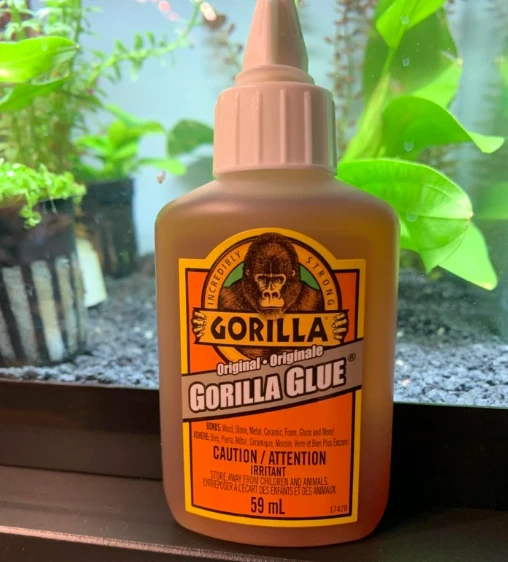
You want to build the aquascape as you’ve imagined it but an aquarium safe glue for rocks just seems counterintuitive.
I remember thinking “this can’t be safe, there are tons of crazy stuff in it!”.
I mean, what if it spreads in the water and destroys all life present there? Is there a super glue aquarium plants would even tolerate?
Let me start with a very short anecdote on super glue.
Unfortunately, super glue seemed like a really handy solution for my aquascaping.
It would be very convenient if I could just use it here and there.
I was obligated to do some heavy research on the subject.
I went through countless authoritative articles, asked my friends that owned fish tanks for their experience and wisdom.
I even significantly improved my knowledge of chemistry.
The good news is I now want to share that knowledge with others that are asking the same questions.
I’ve learned a ton and I’ve digested that info for my fellow aquarists below.
So is using super glue harmless to your aquariums?

Using sewing threads to tie your plants to hardscape can get really tedious really fast.
So it’s completely natural to wonder whether you can use super glue or any other type of adhesive for your aquarium decorations.
Here’s what happens with the super glue in an aquarium and if that makes it safe:
Super glue is safe for use in fish tanks because it becomes completely inert when wet. The main active ingredient of the glue is Cyanoacrylate. When in contact with water it forms strong and stable bonds. Cyanoacrylate is by definition an aquarium safe glue, as water accelerates the curing process.
You may find some super glues contain a similarly named substance called ethyl cyanoacrylate.
Ethyl cyanoacrylate has a slightly different chemical formula than cyanoacrylate.
It is used in skin sealing for animals and even people during surgery.
Despite its scary name, it has nothing to do with the toxicity of Cyanide.
The Gorilla gel super glue can be used as a safe aquarium glue. Here’s a link to Amazon where I’m showing you the exact ethyl cyanoacrylate gel version of that.
Original Gorilla glue can also be used inside an aquarium, but it has a really long curing time.
If you use it, you’ll need to wait for a full 7 days before you can place any decor in the aquarium.
For the record, hot glue is also safe for aquarium use as long as it has no additives and mold inhibitors.
However, bear in mind that it’s not a good long-term adhesive for underwater use, whereas using super glue is both safe and efficient.
Where to use super glue in my aquarium?
Super glue is very strong and it becomes almost as hard as a rock.
However, It will be brittle and it will leave small gaps, which does not make it a good sealant.
This exact property results in it being applicable to small areas only.

by caldermuyo
Though it is an aquarium-safe glue for decor, it’s only good for certain types of decor.
Super glue gel (less mess) is perfect for fixing the following items in your fish tank:
- aquatic plants to rocks
- rocks to rocks
- coral frags to rock (link is to my Hammer coral placement guide)
- live rock to live rock
Super glue is a fantastic way to glue down aquarium plants or corals while creating your desired aquascape. However, you can also use it for gluing aquarium rocks together if it makes sense for your setup.
My tips on using super glue for fish tank purposes
I’d just LOVE it if I could save you the time and mistakes I did when I tried it out the first time.

by spa1unk
And the second time. And the third…
From my experience, you can’t go wrong if you follow a couple of very simple rules.
Here’s what I’ve learned about using super glue in my tanks:
- Use the gel version – In most cases, you’ll want to use a super glue gel. It has a thicker consistency, so it’s easier to apply and control.
This makes it perfect when you’re working with delicate plants that can easily get damaged.
On top of that, it’s less messy than liquid super glue so you won’t have to worry that much.
The runnier texture of liquid super glue however makes it a better suit when you want to join two or more pieces of hardscape.
- Don’t use it for underwater gluing – as mentioned above the active ingredient of the adhesive cures really fast when in contact with water.
You could waste the whole tube of the stuff and still achieve a 0 effect.
Whatever it is that you’re attempting to glue MUST be dry.

by WDKegge
But as we all know, it’s not fun to risk ruining rock work by pulling the bottom ones out, disturbing our fish, and whatnot.
If you really insist on doing the gluing underwater I have used the following method: I glue whatever plants to a really small (1.5 to 2 inches wide) rock outside the aquarium.
I wait it out and then firmly grip at the base of the already fixed plant.
Then I apply LIBERAL amounts of the gel on the bottom of this small rock, being really careful not to glue my own fingers to it.
After that, I have around 30 seconds to dunk the piece in the water and play around with the angles. When I glue to driftwood, say, I use a small piece of driftwood outside the tank.
Warning: Don’t ever use latex gloves in your tank! Most latex gloves are powdered with cornstarch to ease donning.
As a result, there’s a chance they contain unknown substances that may fall in the aquarium and poison fish.
- Cover the glue with dirt – When super glue dries, it leaves an unnatural white color. To avoid this, you can cover the glued spot with some soil or sand from your planted tank’s substrate while you’re waiting for it to cure.
- Use sewing threads along super glue for large plants – Despite all the merits of super glue, using it on heavy plants doesn’t always yield great results.
That’s because large plants offer greater resistance and often break the glue bond.
However, you can offset this by tying the plant with a sewing thread after it has been glued to the hardscape.
- Don’t use glue on plant rhizome – Rhizome plants are the ones that shouldn’t be planted in the substrate, Java Fern, for example. It’s easy to overdose glue on such smaller plants and suffocate them.
That’s why you should apply glue only to their roots or use it on the hardscape instead.
You can then use the cap of the glue to press down the plant until the glue cures.
- All brands are suitable for use – The brand of glue doesn’t matter since the main ingredient in all super glues is cyanoacrylate.
This means you can use Gorilla, Krazy, Loctite, or any other popular brand.
Where not to use super glue in my tank
As the glue is rigid it will not be able to maintain a seal.
It does not do well where there is flexing (when polymerized it won’t have even the slightest elasticity).
Don’t use it as a sealant as it will form microscopic gaps and won’t maintain a thick, impenetrable layer.
Therefore it’s not a good choice for holding water inside your tank.
For sealing, you need an aquarium-safe silicone sealant.

by tonytheshark
I usually use Aqueon’s fish tank sealant for small (and, frankly, medium-sized) jobs and it works pretty well. Amazon has it for a decent price.
My Conclusion
Super glue is not only safe for your marine and freshwater aquariums, but it is also a must-have for every fish-keeping enthusiast. It’s really efficient for crafting nifty aqua decor and it is particularly easy to use.
What about your super glue adventures?
Tell me in the comments.




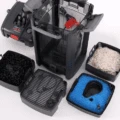

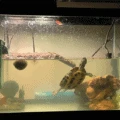
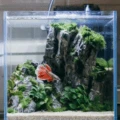
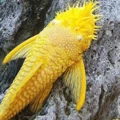

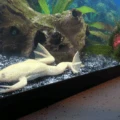
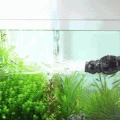
Great Info, very late to reply but i assume that i can use this method to add mesh to cover the intake slots on my internal filters? I have 3 filters that came with my tank but want to keep small fish (tetras, danios) and have heard horror stories of people finding them dead inside the intake If i glueit to the outside that should be safe right?
Absolutely, Neal!
And thank you for your kind words.
Thank you!!
I superglued a plastic chopstick to a take away fork to use as a sand rake. I’d buy one but it’s out of my price range atm. I just hope its strong enough.
Tanks!
hi, I like just wanted to know if I could use Krazy Glue for gluing some plants to my new rocks but just wanted to make use that specific glue is fine? 🙂
Hi, Krazy Glue is definitely an option as well. In the context of gluing plants both brands will do. 🙂
Thank you for the information very helpful, now if i can just get my frags to stay were i glue them i will be a happy soul 🙂
My LFS suggested I glue a rock to my back wall using 2 little fishies coraffix gel. They suggested I put a large glob on the rock then press it into the glass (under water) honestly messier then I had imagined but seems to have done the job. Now to wait and see if I have any negative side effects. I’ll let you know.
Okay, thanks, Michael.
Be careful putting rocks up against glass as it can create pressure points and crack it.
Thanks for the info. I knew it was used, but couldn’t understand how! Now I will feel safe using it. I’ll subscribe for the future.🐠
THANK YOU! I was doing a water change. I noticed a couple of my fake plants had a tiny piece of metal sticking up from missing leafs, and rust! So now Im fretting about rust in my tank. Im also fretting about buying an entire tube of expensive Aquarium Glue just for 2 micro-tiny spots, I finished cleaning up the tank and let the plants dry out over night. Jumped on the web this morning to look for safe alternative glues to use on aquariums and your article popped right up. The problem with buying a tube of aquarium glue is that you might only need it once or twice and then the whole tube dries out before you need to use it again if ever. Im a big super glue gel person, I always have it hanging around. I cut back the rusty metal spots on the plants, put on my fav Loctite Super Glue Gel, let it dry for a bit in the air then stuck them in a bowl of water for the time you suggested. Im back in business and my little Betta is non the wiser, he’s just happy his hiding plant is back. So thanks for the time you took to research this and then share it with the world. Cheers!
Ha, glad I could help, sunny 🙂
Thanks for the info, much appreciated
Makes me happy that my articles helped someone!
Stay well, Will!